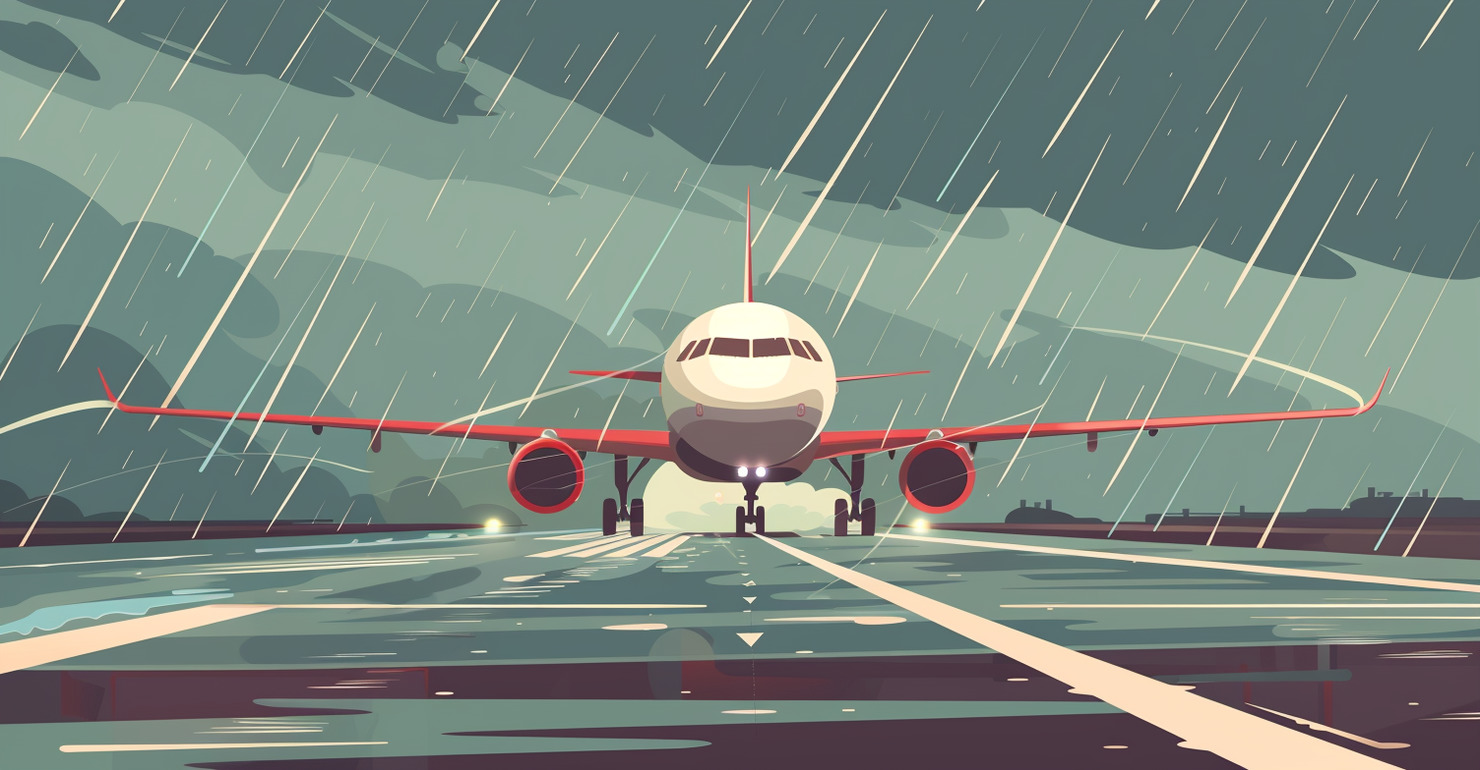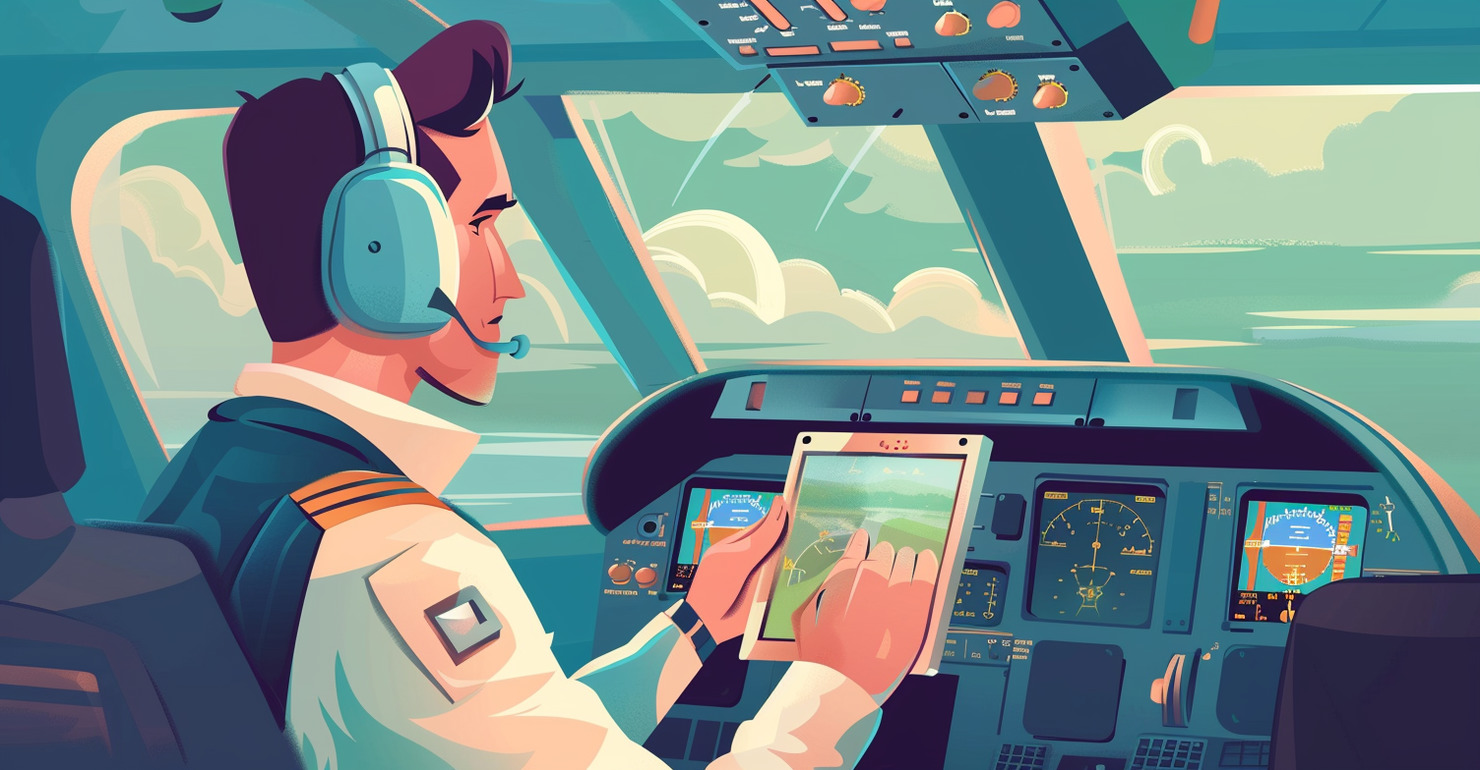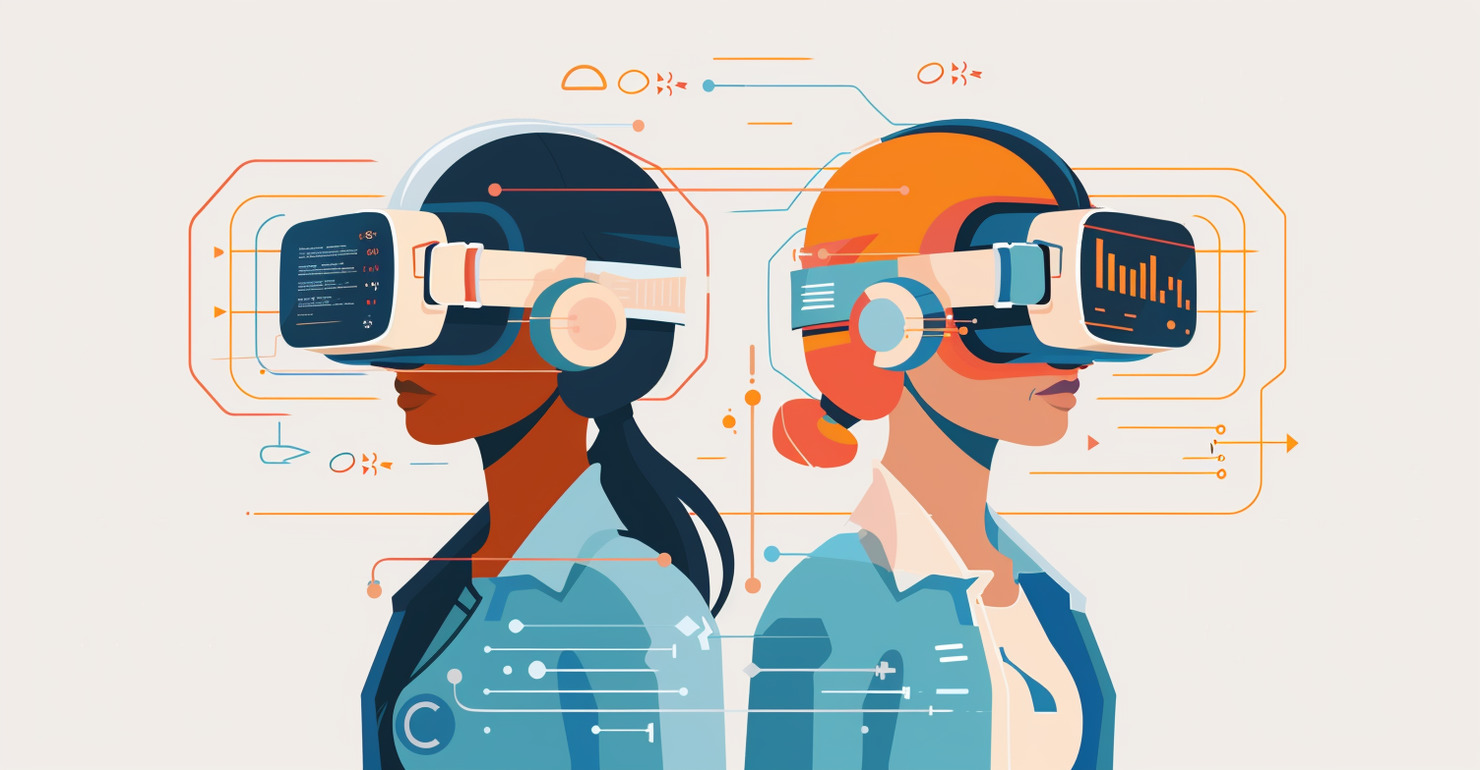
Advances in Weather Prediction Technology for Safer Flights
Advances in weather prediction technology have revolutionized the aviation industry, leading to safer and more efficient flights. The development of storm-scale weather prediction systems that focus on small-scale weather events has allowed for more accurate and timely forecasts, reducing flight delays and improving overall safety. Sensor modernization has played a crucial role in this advancement, with improved observations and models providing better data for weather analysis. Additionally, artificial intelligence and machine learning have been utilized to create predictive insights for connected aircraft solutions, aiding pilots in situational awareness and precision control. High-resolution weather analysis and advanced weather radar have further enhanced weather prediction capabilities, allowing pilots to anticipate adverse weather conditions and make informed decisions. The integration of augmented reality into flight management systems has improved pilots’ situational awareness, while connected aircraft solutions have enabled better information sharing and more efficient maintenance. As technology continues to evolve, the future of weather prediction holds even greater promise for ensuring safer and smoother flights.
Storm-Scale Weather Prediction

Advances in storm-scale weather prediction technology have significantly enhanced the accuracy and timeliness of weather forecasts for safer flights. This approach focuses on small-scale weather events that occur within a short time frame and limited spatial scales, such as intense thunderstorms and tornadoes. Through sensor modernization and data collection, meteorologists are now able to gather more detailed observations, feeding them into models that can predict storm development and movement with greater precision.
Storm-scale weather prediction plays a crucial role in aviation safety by providing pilots and air traffic controllers with vital information to avoid hazardous weather conditions. Timely warnings about thunderstorms, hail, gusty winds, and other severe weather phenomena allow pilots to reroute flights or delay departures, minimizing the risk of turbulence, wind shear, and other dangerous situations.
Advanced technologies, such as high-resolution weather analysis and artificial intelligence, are employed to process vast amounts of data and perform complex calculations necessary for storm-scale weather prediction. These advancements enable meteorologists and forecasters to generate accurate forecasts that consider local conditions and rapidly evolving weather patterns, improving situational awareness and decision-making for pilots and flight operations.
With storm-scale weather prediction systems, airlines can proactively plan flight routes, optimizing fuel efficiency and reducing the potential for flight delays. By integrating real-time weather data and predictive insights into cockpit displays and flight management systems, pilots can make informed decisions to ensure the safety of passengers and crew.
As technology continues to evolve, storm-scale weather prediction will continue to advance, leading to safer and more efficient flights. The integration of machine learning algorithms into weather prediction models holds the promise of further improving the accuracy and lead time of storm predictions. This will enable pilots to navigate around severe weather events and contribute to a safer aviation industry overall.
Sensor Modernization
Advances in sensor modernization have revolutionized weather prediction for safer flights. By upgrading and deploying advanced weather sensors, such as radar systems and remote monitoring devices, meteorologists can gather more accurate and precise weather data. These sensors provide real-time information on atmospheric conditions, including temperature, humidity, wind speed, and air pressure.
The collected data is then integrated into sophisticated weather models, which use complex algorithms to analyze and predict weather patterns. With sensor modernization, meteorologists can now detect and track smaller-scale weather phenomena, such as thunderstorms and turbulence, with greater accuracy and timeliness.
Sensor technology has also improved the observation of severe weather events, such as hurricanes and tornadoes. Advanced radar systems can penetrate through intense rain and clouds, allowing meteorologists to monitor the development and movement of these hazardous weather conditions. This information is crucial for issuing timely warnings to pilots and air traffic controllers, enabling them to take preventive measures and ensure the safety of flights.
Furthermore, sensor modernization has enabled the integration of weather data from multiple sources, such as satellites, ground-based sensors, and aircraft reports. This comprehensive approach provides a holistic view of weather conditions, improving forecast accuracy and enhancing situational awareness for pilots.
Overall, sensor modernization has significantly contributed to safer flights by providing meteorologists and pilots with more reliable and detailed weather information. As technology continues to advance, further improvements in sensor capabilities are expected, promising even more accurate and precise weather predictions for safer aviation operations.
Artificial Intelligence and Machine Learning
The integration of artificial intelligence (AI) and machine learning (ML) techniques has revolutionized weather prediction for safer flights. These technologies enable the analysis of vast amounts of data and the identification of patterns that humans might miss, leading to more accurate and reliable weather forecasts.
AI and ML algorithms can process and interpret complex weather data from various sources, such as satellites, radars, and weather sensors. This enables meteorologists to generate precise predictions of atmospheric conditions, including wind patterns, cloud formations, and storm development.
By continuously learning from historical weather data, AI and ML models can improve their forecasting capabilities over time. They can identify subtle correlations between different weather variables and enhance the accuracy of predictions for specific regions and timeframes.
One application of AI and ML in weather prediction is the development of nowcasting models, which provide real-time updates on rapidly changing weather conditions. These models analyze current observations and use AI algorithms to extrapolate short-term forecasts, enabling pilots to make informed decisions about flight routes and potential hazards.
In addition to improving forecast accuracy, AI and ML technologies are also used to develop predictive analytics for connected aircraft solutions. These systems use real-time weather data and historical patterns to anticipate the impact of weather on flight operations, allowing pilots and operators to proactively adjust schedules, optimize fuel consumption, and ensure passenger safety.
Furthermore, the integration of AI and ML into flight management systems and cockpit displays enhances pilots’ situational awareness. They can receive real-time weather updates and visualizations, enabling them to make timely decisions to avoid adverse weather conditions and ensure a smooth and safe flight.
As AI and ML technologies continue to evolve, the future of weather prediction holds great promise for further enhancing flight safety. With ongoing advancements in computing power and data analysis techniques, these technologies will continue to contribute to more accurate and reliable weather forecasts, ultimately leading to safer aviation operations.
High-Resolution Weather Analysis
The advancement of high-resolution weather analysis techniques has significantly improved the accuracy and reliability of weather predictions for safer flights. This approach involves using sophisticated models and algorithms to analyze and interpret weather data at a more granular level.
High-resolution weather analysis provides a detailed understanding of atmospheric conditions, including temperature, humidity, wind patterns, and precipitation. By capturing small-scale details and variations in weather patterns, meteorologists can generate more accurate and localized forecasts.
One key aspect of high-resolution weather analysis is the use of advanced radar systems and satellite imagery. These technologies provide precise measurements and observations of weather phenomena, allowing meteorologists to track and monitor the development of storms, thunderstorms, and other hazardous weather conditions.
By incorporating high-resolution weather analysis into aviation operations, pilots can receive more precise and timely information about weather conditions along their flight routes. This enables them to make informed decisions regarding route planning, altitude changes, and potential detours to avoid adverse weather conditions.
Furthermore, high-resolution weather analysis plays a crucial role in predicting and forecasting turbulence, wind shear, and other aviation hazards. By accurately identifying and anticipating these phenomena, pilots can take proactive measures to ensure the safety and comfort of passengers and crew.
As technology continues to evolve, high-resolution weather analysis techniques will continue to advance, leading to even more precise and reliable weather forecasts. The integration of artificial intelligence and machine learning algorithms into these analysis methods holds great promise for further improving forecast accuracy and lead time, ultimately enhancing flight safety.
Advanced Weather Radar
The development and utilization of advanced weather radar technology have significantly enhanced weather prediction capabilities for safer flights. Advanced radar systems, such as Honeywell’s IntuVue 3-D Weather Radar, offer improved detection of turbulence, hail, lightning, and other hazardous weather conditions.
Honeywell’s IntuVue radar, for example, has the ability to detect turbulence up to 60 nautical miles away and provide valuable predictions on hail and lightning, assisting pilots in making informed decisions about flight paths and avoiding potentially dangerous weather situations.
Beyond major airliners, advanced weather radar technology is increasingly being integrated into business aviation and general aviation platforms, providing pilots with critical real-time weather information for enhanced situational awareness and flight safety.
The continuous improvement and innovation in weather radar technology enable meteorologists and pilots to track and monitor severe weather phenomena with greater accuracy and lead time. This enables pilots to navigate around adverse weather conditions, ensuring the safety and comfort of passengers and crew.
Additionally, advancements in weather radar technology contribute to improved operational efficiency. By providing accurate and up-to-date weather data, pilots can optimize flight routes, reduce fuel consumption, and minimize flight delays.
The integration of advanced weather radar technology into the cockpit, combined with other technologies like augmented reality, further enhances pilots’ situational awareness by providing real-time weather updates and visualizations.
As the field of weather radar technology continues to evolve, we can expect further improvements in radar capabilities, precision, and coverage. This will enable better detection and forecasting of weather conditions, leading to safer and more efficient flights.
Augmented Reality for Enhanced Situational Awareness

Augmented reality (AR) technology is revolutionizing situational awareness for pilots, leading to safer flights. AR integrates digital information and overlays it onto the real-world environment, providing pilots with enhanced visualization and understanding of their surroundings.
By utilizing AR technology, pilots can access real-time weather data, such as radar images, turbulence forecasts, and cloud cover, directly in their field of view. This allows them to quickly and accurately assess the current and future weather conditions along their flight routes.
In addition to weather information, AR can also display critical flight data, aircraft performance parameters, and navigation aids, providing pilots with a comprehensive and intuitive representation of their aircraft’s status and position.
AR also enables pilots to visualize and respond to potential threats in real-time. For example, by overlaying terrain and obstacle data onto the outside view, pilots can better navigate challenging landscapes or avoid hazards, ensuring the safety of the aircraft and its occupants.
Furthermore, AR technology can improve communication and collaboration between pilots and air traffic controllers. By sharing a common augmented reality interface, both parties can have a shared understanding of the airspace, enabling more efficient and safe coordination.
The integration of AR into flight management systems and cockpit displays provides pilots with an enhanced situational awareness that allows for more proactive decision-making. By having a clear and comprehensive view of the surrounding environment, pilots can effectively anticipate and respond to changing weather conditions and potential risks.
As AR technology continues to advance, we can expect further improvements in visualization, data integration, and user experience. This will lead to even greater enhancements in pilots’ situational awareness, ultimately contributing to safer and more efficient flights.
Connected Aircraft Solutions
Connected aircraft solutions are transforming the field of aviation by integrating advanced technologies and data exchange systems to enhance flight safety in various weather conditions. These solutions leverage real-time data collection, remote monitoring, and advanced weather modeling to provide accurate and timely weather forecasts.
By utilizing connected aircraft solutions, pilots and operators can access up-to-date weather information, enabling them to make informed decisions regarding flight operations. These solutions offer benefits such as improved flight planning, route optimization, and more efficient maintenance practices.
The networking of different aircraft systems and services within a connected aircraft enables the seamless exchange of information, allowing for better coordination between ground-based operations and the aircraft in-flight. This data exchange facilitates quicker response times to changing weather conditions and enhances situational awareness for pilots.
Connected aircraft solutions also contribute to enhanced safety by collecting and analyzing vast amounts of data from various sources. This includes real-time weather data, aircraft performance metrics, and historical patterns. By harnessing this data, operators can identify potential risks and take preventive measures to ensure the safety of the flight.
Furthermore, the integration of connected aircraft solutions with cockpit displays and electronic flight bags enables pilots to view real-time weather updates and proactive alerts, ensuring they stay informed about evolving weather conditions and can respond accordingly.
With the continuous development of connected aircraft solutions, ongoing advancements in technology, data analysis, and connectivity will further enhance flight safety by providing pilots and operators with comprehensive and highly tailored weather information. This will enable them to effectively mitigate risks associated with adverse weather conditions and make informed decisions for safer flights.
Conclusion
Advances in weather prediction technology have paved the way for safer flights by providing pilots and operators with more accurate, timely, and detailed weather information. Storm-scale weather prediction systems, sensor modernization, artificial intelligence and machine learning, high-resolution weather analysis, advanced weather radar, augmented reality, and connected aircraft solutions have all played significant roles in enhancing flight safety.
Storm-scale weather prediction focuses on small-scale weather events, enabling accurate and timely forecasts of thunderstorms, turbulence, and other hazardous conditions. Sensor modernization has improved data collection and observations, contributing to more precise weather analysis. Artificial intelligence and machine learning algorithms process vast amounts of data, leading to improved predictive insights and situational awareness for pilots.
High-resolution weather analysis allows for detailed understanding of atmospheric conditions, while advanced weather radar detects turbulence, hail, and lightning with accuracy. Augmented reality enhances pilots’ situational awareness by overlaying real-time weather information onto their field of view. Connected aircraft solutions facilitate information exchange, optimizing flight planning and enhancing maintenance practices.
In conclusion, these advancements in weather prediction technology have created a safer aviation industry by enabling pilots to make informed decisions, proactively avoid adverse weather conditions, and optimize operational efficiency. As technology continues to evolve, further improvements in accuracy and precision can be expected, leading to even safer and more efficient flights in the future.



